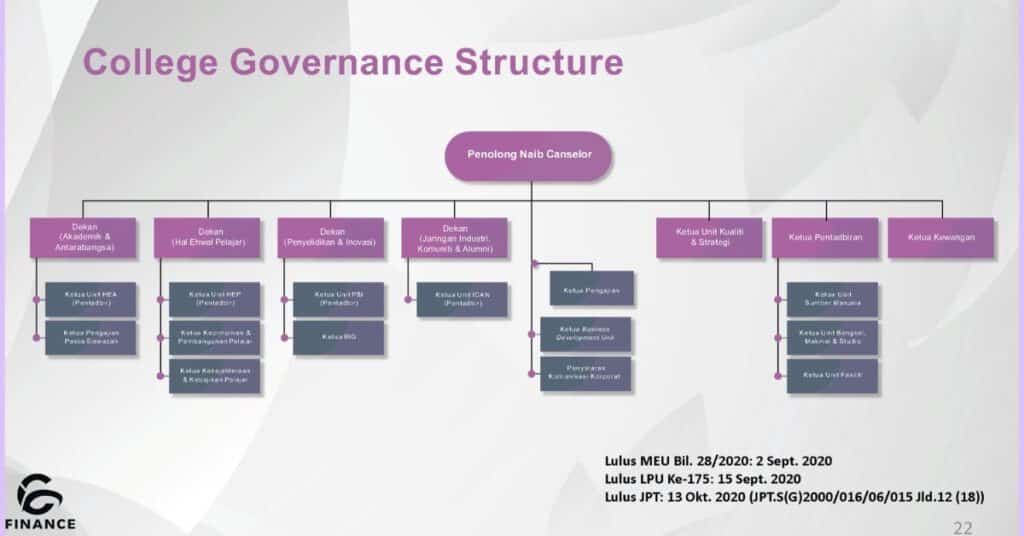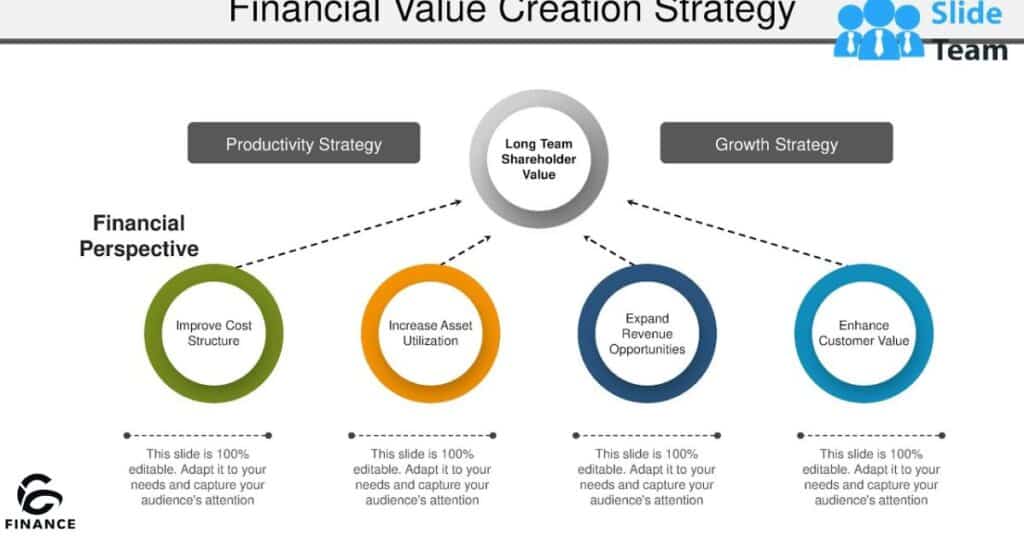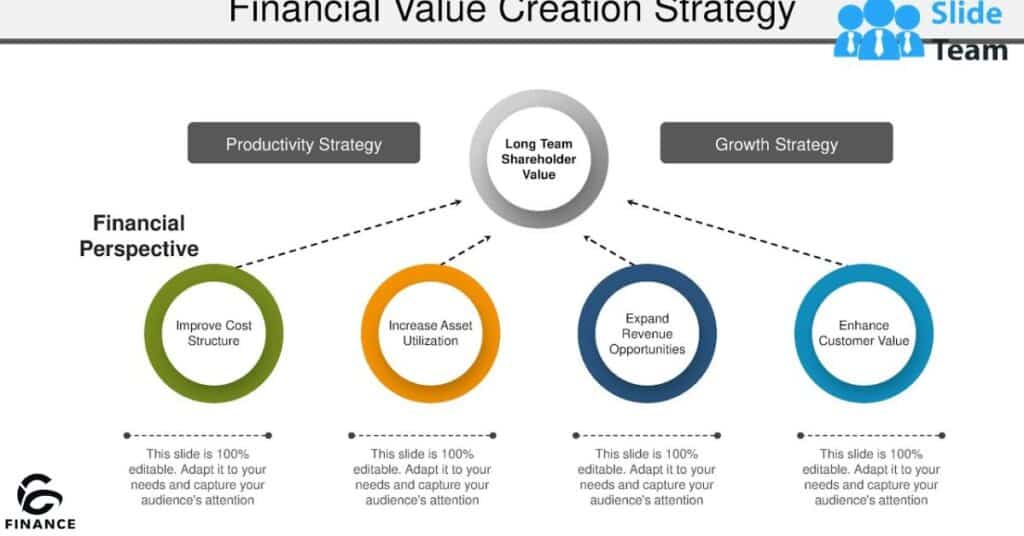Restructuring investment banking involves navigating financial distress for companies, managing debt obligations to regain stability. In this specialized field, professionals guide distressed companies through restructuring processes, ensuring sustainability and growth.
In restructuring investment banking, experts offer strategic advice and financial analysis to both debtors and creditors, facilitating negotiations and restructuring plans.
With a focus on preserving value and optimizing outcomes, restructuring investment banking plays a crucial role in revitalizing struggling businesses, fostering resilience in challenging economic climates.
What is Restructuring?
Restructuring involves reorganizing existing debt obligations to alleviate financial strain and enhance operational flexibility. It’s a crucial process for companies facing financial distress, offering a pathway to sustainable growth and stability. In the realm of restructuring investment banking, specialized expertise guides companies through complex negotiations and strategic decision-making.
Enhanced Flexibility:Restructuring allows companies to adapt their financial obligations to current market conditions, reducing liquidity constraints and improving cash flow management.
Debt Repayment Strategies:Through restructuring, companies can devise tailored plans to address debt burdens, whether through renegotiation, refinancing, or asset sales.
Creditor Negotiations:Restructuring investment banking facilitates constructive dialogue between debtors and creditors, fostering agreements that benefit all parties involved.
Operational Efficiency: By streamlining debt obligations, companies can focus on core operations, driving efficiency and productivity.
Long-term Viability:Successful restructuring sets the foundation for sustainable growth, enabling companies to emerge stronger and more resilient in the face of economic challenges.
Read As:WHAT IS THE HFT EPAY CHARGES ON YOUR BANK STATEMENT?
When Does Restructuring Typically Take Place?

Restructuring typically occurs when a company faces financial turmoil or struggles with debt obligations. It’s a strategic move made by companies to regain financial stability and flexibility. Companies usually consider restructuring when they’re unable to meet their debt obligations or face liquidity issues.
Key factors influencing the timing of restructuring include imminent interest payments or debt maturities. Companies often initiate restructuring just before facing these financial obligations. It’s a proactive approach to addressing financial distress and avoiding potential default scenarios.
- Financial turmoil prompts companies to consider restructuring.
- Companies assess their debt obligations and financial viability.
- Negotiating with creditors and evaluating asset sales are crucial steps.
- Timing of restructuring is influenced by imminent financial obligations.
- Proactive approach helps companies navigate through financial challenges.
In the realm of financial distress, the role of restructuring investment banking is paramount. These specialized institutions navigate complex scenarios to bring stability and strategic guidance to distressed companies.
Amidst the turbulence of financial crises, restructuring investment banking emerges as a beacon of hope. With expertise honed through experience, these institutions offer invaluable support to companies in dire need.
Through meticulous analysis and strategic planning, restructuring investment banking firms chart a course toward recovery. Their efforts are instrumental in steering companies through the stormy seas of financial turmoil.
Key Responsibilities
Strategic Guidance: Providing comprehensive analysis and strategic advice to distressed companies.
Negotiation Support: Assisting in negotiations with creditors to reach mutually beneficial agreements.
Financial Analysis: Conducting in-depth financial analysis to assess the viability of restructuring options.
Legal Expertise: Navigating complex legal frameworks and regulations surrounding restructuring processes.
Stakeholder Management: Facilitating communication and collaboration between debtors and creditors.
Out-of-Court Restructuring
In the realm of restructuring investment banking, out-of-court restructuring emerges as a crucial avenue for distressed companies. This approach involves direct negotiations between companies and creditors outside the confines of bankruptcy proceedings. By opting for out-of-court restructuring, companies can
- Engage in direct dialogue with creditors to renegotiate debt terms.
- Implement strategies like debt modification and voluntary haircuts.
- Avoid the formalities and expenses associated with bankruptcy filings.
- Maintain greater control over the restructuring process.
- Preserve relationships with stakeholders and maintain business operations.
Navigating through out-of-court restructuring requires adept guidance from restructuring investment banking professionals, who play a pivotal role in facilitating negotiations and securing favorable outcomes for all parties involved.
the complexities of bankruptcy proceedings to revitalize financial health. Restructuring investment banking plays a central role in orchestrating these intricate processes, leveraging expertise in restructuring law and finance. Throughout the in-court restructuring process, restructuring investment banking teams collaborate closely with debtors and creditors to formulate viable reorganization strategies.
Key Aspects of In-Court Restructuring
- Engaging with bankruptcy laws and regulations to guide companies through Chapter 11 proceedings.
- Facilitating access to financing to sustain operations during bankruptcy proceedings.
- Balancing the interests of various creditor classes to achieve consensus on restructuring plans.
- Working towards obtaining court approval for the reorganization plan, ensuring fairness and feasibility.
- Overseeing the implementation of approved restructuring plans to facilitate a successful emergence from bankruptcy.
How Does a Restructuring Investment Bank Get Paid?
In the realm of restructuring investment banking, compensation is a crucial aspect. Here’s how restructuring investment banks get paid:
Monthly Retainers:
- Restructuring investment banks receive monthly retainers for their advisory services.
- These retainers ensure a steady income stream for the bank throughout the restructuring process.
- Monthly retainers provide financial stability to restructuring investment banks amid uncertain timelines.
Success Fees:
- Upon successful completion of a restructuring deal, restructuring investment banks earn success fees.
- These fees are often contingent on the outcome of the restructuring, incentivizing banks to achieve favorable results.
- Success fees serve as a reward for the expertise and effort invested by restructuring investment banks.
Additional Fees for Asset Sales:
- In certain cases, restructuring investment banks may facilitate asset sales as part of the restructuring process.
- For each successful asset sale, banks may earn additional fees based on the transaction value.
- These fees compensate restructuring investment banks for their role in maximizing value for the distressed company.
Fees for Capital Raises
- Restructuring investment banks may assist distressed companies in raising capital to support their restructuring efforts.
- For securing capital through debt or equity offerings, banks receive fees based on the amount raised.
- Capital raise fees reflect the value-added by restructuring investment banks in securing vital funding for the company.
Compensation for Advisory Services
- Apart from transactional fees, restructuring investment banks may also charge fees for advisory services.
- These fees cover comprehensive analysis, strategic guidance, and ongoing support provided by banks throughout the restructuring process.
- Compensation for advisory services ensures that restructuring investment banks are adequately rewarded for their expertise and assistance.
Key Technical Skills for Restructuring Investment Bankers
Technical Expertise
- Proficiency in financial modeling, including scenario analysis and cash flow projections.
- Deep understanding of valuation methodologies, such as discounted cash flow (DCF) and comparable company analysis (CCA).
- Familiarity with complex financial instruments and debt restructuring strategies.
- Ability to interpret legal documents and navigate regulatory frameworks.
- Strong analytical skills to assess the financial health and viability of distressed companies.
Industry Knowledge
- Comprehensive understanding of various industries and their unique challenges.
- Awareness of market trends, competitive dynamics, and regulatory changes affecting distressed companies.
- Insight into macroeconomic factors impacting business operations and financial markets.
- Ability to conduct thorough industry analysis and identify key drivers of value.
- Adaptability to evolving industry landscapes and emerging opportunities.
Negotiation Skills
- Effective communication skills to articulate complex financial concepts and negotiate with stakeholders.
- Ability to build rapport and establish trust with clients, creditors, and other parties involved in restructuring.
- Confidence to advocate for clients’ interests while seeking mutually beneficial solutions.
- Strategic mindset to anticipate potential challenges and overcome obstacles in negotiations.
- Diplomacy and tact to navigate conflicts and reach consensus among diverse stakeholders.
Restructuring Investment Banking vs Traditional Investment Banking
In the realm of finance, two distinct paths emerge: Restructuring Investment Banking and Traditional Investment Banking. These avenues offer unique challenges and opportunities for finance professionals.
Differentiating Factors
Restructuring Investment Banking focuses on guiding distressed companies through financial challenges.Traditional Investment Banking centers around M&A, capital raising, and corporate advisory services.
Skill Set Requirements
Restructuring Investment Banking demands expertise in financial restructuring, legal frameworks, and distressed asset valuation.Traditional Investment Banking emphasizes deal execution, financial modeling, and client relationship management.
Work Environment
Restructuring Investment Banking often involves longer hours and high-pressure situations due to the complex nature of distressed scenarios.Traditional Investment Banking offers a fast-paced environment with intense deal cycles and demanding client expectations.
Exit Opportunities
Restructuring Investment Banking opens doors to careers in distressed debt funds, credit funds, private equity, and corporate advisory roles.Traditional Investment Banking provides avenues for advancement into corporate finance, private equity, hedge funds, and entrepreneurial ventures.
Competition for Restructuring Roles is Even More Fierce

In the competitive landscape of restructuring roles, the demand for expertise is soaring. Aspiring professionals vie for opportunities in this dynamic field. Amidst fierce competition, distinct skills and attributes set candidates apart.
Key Attributes for Success
- Strong analytical skills are paramount.
- Effective communication is crucial for conveying complex concepts.
- Adaptability is essential to navigate diverse restructuring scenarios.
- Resilience and perseverance are vital in high-pressure environments.
- Proactive problem-solving distinguishes top performers.
Navigating the Path to Success
- Networking plays a pivotal role in accessing opportunities.
- Continuous learning and skill development are imperative.
- Seeking mentorship from seasoned professionals can provide invaluable guidance.
- Gaining hands-on experience through internships or entry-level roles is essential.
- Staying updated on industry trends and market dynamics is indispensable.
What Causes “Stress” or “Distress”?
Financial distress can arise from various factors, creating significant challenges for companies. Understanding the root causes of this distress is crucial for effective navigation through turbulent times.
Causes of Financial Distress
- Economic Downturns: Sudden shifts in economic conditions can strain businesses, leading to decreased consumer spending and reduced revenues.
- Excessive Debt: Companies burdened with high levels of debt may struggle to meet their financial obligations, resulting in cash flow constraints.
- Operational Inefficiencies: Poor management practices, inefficient processes, and outdated technology can hinder business performance, contributing to financial distress.
- Market Disruptions: Changes in market dynamics, emerging competitors, or technological advancements can disrupt established business models, impacting profitability.
External Factors: Unforeseen events such as natural disasters, geopolitical tensions, or regulatory changes can adversely affect business operations and financial stability.
Navigating Financial Stress
- Proactive Planning: Companies must anticipate and plan for potential sources of financial distress to mitigate risks and develop contingency strategies.
- Strategic Decision-Making: Effective leadership and sound strategic decisions are essential for adapting to changing market conditions and maintaining financial resilience.
- Stakeholder Engagement: Open communication and collaboration with stakeholders, including investors, creditors, and employees, are critical for addressing financial challenges.
- Financial Management: Implementing prudent financial management practices, including cost optimization, cash flow management, and debt restructuring, can help alleviate financial strain.
- Continuous Monitoring: Regular monitoring of key financial indicators and performance metrics enables early detection of warning signs and facilitates timely intervention to prevent escalation of financial distress.
Financial Restructuring: What Can Bankers Do About the Distress?
In today’s volatile market, financial distress is a common challenge for businesses.Amidst such turmoil, restructuring investment bankers play a crucial role in guiding companies through turbulent times.Their expertise and strategic guidance help companies navigate complex debt obligations and emerge stronger.
Understanding Financial Distress
- Financial distress arises from various factors like declining revenues, excessive debt burdens, or economic downturns.
- Companies facing distress often struggle to meet debt obligations, risking bankruptcy or insolvency.
- Identifying signs of distress early allows companies to take proactive measures and explore restructuring options.
- Effective restructuring can help alleviate financial burdens, improve liquidity, and ensure long-term sustainability.
- Restructuring investment bankers provide specialized expertise to analyze, strategize, and negotiate restructuring plans.
Role of Restructuring Investment Bankers
- Restructuring investment bankers advise both debtors and creditors on navigating financial distress.
- They conduct comprehensive analyses to assess the company’s financial situation and explore restructuring options.
- By formulating strategic plans and negotiating with stakeholders, they aim to achieve mutually beneficial outcomes.
- Their role extends beyond financial expertise, often involving legal and operational considerations.
- Through their guidance, restructuring investment bankers help companies chart a path towards financial stability and growth.
Read As:WHAT IS A P2 TRUEDLY TRANSACTION ON YOUR BANK STATEMENT?
Restructuring Valuation and Financial Modeling Work

In the realm of financial restructuring, valuation and financial modeling are indispensable tools. They enable companies to navigate through turbulent financial waters and emerge stronger.
In today’s dynamic business landscape, companies often find themselves in need of restructuring to address financial challenges effectively.
With the expertise in restructuring valuation and financial modeling, professionals play a crucial role in guiding companies through the complexities of restructuring processes.
Key Components
- Valuation Methods in Restructuring
- Discounted Cash Flow (DCF) Analysis
- Comparable Company Analysis (CCA)
- Asset-Based Valuation
- Financial Modeling Techniques
- Building integrated financial models
- Scenario analysis and sensitivity testing
Benefits
- Provides insights into company’s financial health
- Facilitates informed decision-making during restructuring
- Helps in negotiating with creditors and stakeholders
- Allows forecasting of future cash flows and performance
- Enables scenario planning to anticipate various outcomes
Who Breaks Into Restructuring Investment Banking?
Recent Graduates
- Recent graduates with degrees in finance, accounting, or related fields.
- Those seeking challenging roles in dynamic financial environments.
- Individuals eager to apply their analytical skills and learn from seasoned professionals.
Career Changers
- Professionals from diverse backgrounds looking for new opportunities.
- Individuals attracted to the fast-paced nature of restructuring.
- Those seeking to transition into finance and explore specialized areas.
Experienced Bankers
- Seasoned bankers with a passion for complex financial transactions.
- Professionals with prior experience in M&A or corporate finance.
- Individuals seeking to broaden their skill set and take on new challenges.
Restructuring Interview Questions
In the competitive world of investment banking, restructuring interviews can be a pivotal step towards landing your dream job. Understanding the types of questions you may encounter and how to approach them is essential for standing out from the crowd.
Why Preparation Matters
- Thorough preparation can boost your confidence and help you articulate your skills and experiences effectively.
- Familiarizing yourself with common restructuring interview questions can give you a competitive edge and demonstrate your commitment to the role.
- By honing your responses and practicing mock interviews, you can showcase your expertise and suitability for the position, increasing your chances of success.
Key Areas of Focus
- Types of restructuring scenarios: Be prepared to discuss both in-court and out-of-court restructuring processes and their implications.
- Technical skills assessment: Expect questions on financial modeling, valuation methodologies, and understanding of bankruptcy laws.
- Problem-solving abilities: Demonstrate your ability to analyze complex situations, identify key issues, and propose viable solutions.
- Industry knowledge: Stay updated on current market trends, industry developments, and case studies relevant to restructuring.
- Communication and teamwork: Showcase your interpersonal skills, ability to collaborate with diverse teams, and aptitude for client interactions.
Restructuring Investment Banking Salary Level
In the competitive realm of finance, salaries in restructuring investment banking are a significant point of interest. Understanding these salary levels provides insight into the lucrative nature of the profession.
Competitive Compensation Packages
- Restructuring investment banking salaries often exceed those in traditional investment banking roles.
- Base salaries are typically supplemented by performance-based bonuses, reflecting the demanding nature of the job.
- Experienced professionals in restructuring investment banking command higher compensation packages compared to entry-level positions.
Factors Influencing Salary Levels
- The size and reputation of the firm greatly impact salary levels, with top-tier firms offering more competitive packages.
- Geographic location plays a role, with financial hubs like New York City typically offering higher salaries.
- Market conditions and demand for restructuring expertise also influence salary negotiations.
Career Progression and Earning Potential
- Junior analysts and associates can expect steady salary increases as they gain experience and expertise.
- Vice presidents and managing directors in restructuring investment banking enjoy substantial earning potential, with bonuses often exceeding base salaries.
- The dynamic nature of the field presents opportunities for rapid career advancement and corresponding increases in compensation.
Restructuring Investment Banking: Pros and Cons
In the realm of finance, restructuring investment banking offers both advantages and drawbacks. Understanding these pros and cons is crucial for professionals navigating this field.
Pros of Restructuring Investment Banking
- Diverse Opportunities: Provides exposure to various industries and business models.
- Counter-cyclicality: Thrives in economic downturns, offering stability in turbulent times.
- High Compensation: Generally offers higher pay compared to traditional investment banking roles.
- Intellectual Challenge: Involves complex problem-solving and critical thinking.
- Transferable Skills: Equips professionals with skills applicable across different sectors.
Cons of Restructuring Investment Banking
- Long Hours: Requires commitment and dedication, often leading to demanding work schedules.
- Limited Exit Opportunities: Offers fewer career paths compared to traditional investment banking.
- High Stress Environment: Involves high-pressure situations and tight deadlines.
- Narrow Focus: Specializes in distressed situations, limiting exposure to other aspects of finance.
- Intense Competition: Faces fierce competition for limited positions and deals.
The Restructuring Timeline
In the world of finance, restructuring plays a pivotal role in reshaping struggling companies. It’s a process fraught with challenges and complexities, yet it offers opportunities for renewal and growth. Understanding the restructuring timeline is essential for navigating through financial turbulence.
Key Phases of Restructuring
- Assessment of Financial Distress
- Formulation of Restructuring Strategy
- Implementation of Restructuring Plan
- Negotiations with Creditors
- Emergence of a Revitalized Entity
- Navigating Financial Challenges
Recognizing Signs of Distress
- Proactive Planning for Restructuring
- Collaboration with Stakeholders
- Adapting to Changing Market Dynamics
- Embracing Opportunities for Transformation
The Signs of Corporate Distress
Recognizing signs of corporate distress is crucial for proactive management and timely intervention. High debt levels, declining revenues, and missed financial targets are key indicators to watch for. Early detection allows companies to strategize and seek assistance to mitigate risks and stabilize operations.
Key Signs of Corporate Distres
- High Debt Levels
- Declining Revenues
- Missed Financial Targets
- Increased Operating Costs
- Decreased Market Share
Identifying these signs empowers businesses to take corrective measures and explore restructuring options if needed. Prompt action can help alleviate financial pressures and pave the way for sustainable growth.
Restructuring Investment Banks and What They Do

In the world of finance, restructuring investment banks play a vital role in guiding companies through financial turmoil. These specialized banks offer strategic advice and solutions to distressed companies and their creditors, facilitating complex restructuring processes.
What Do Restructuring Investment Banks Do?
- Strategic Guidance: Advising distressed companies on restructuring options and developing comprehensive strategies.
- Negotiation Support: Assisting in negotiations with creditors to renegotiate debt terms and reach mutually beneficial agreements.
- Financial Analysis: Conducting in-depth financial analysis to assess the viability of restructuring plans and potential outcomes.
- Legal Expertise: Providing insights into bankruptcy laws and regulations to ensure compliance and optimize restructuring efforts.
- Stakeholder Communication: Facilitating communication between debtors, creditors, and other stakeholders to foster transparency and cooperation.
The Role of Restructuring Investment Banks
- Advisory Services: Offering tailored advice and solutions to companies facing financial distress, including debt restructuring and asset sales.
- Transaction Execution: Managing the execution of restructuring transactions, from due diligence to deal closure, with precision and efficiency.
- Risk Management: Identifying and mitigating risks associated with restructuring processes to safeguard the interests of all parties involved.
- Relationship Building: Cultivating strong relationships with clients, creditors, and other stakeholders to foster trust and collaboration.
- Value Creation: Creating value for clients by developing innovative restructuring strategies that optimize financial performance and enhance long-term viability.
The Restructuring Solutions
In today’s volatile market, companies often face financial challenges that require swift and strategic action to navigate. As businesses encounter obstacles, restructuring solutions emerge as essential tools to overcome financial distress.
In the realm of restructuring, companies seek ways to reorganize their debt obligations and optimize their financial structures. Through comprehensive analysis and strategic planning, restructuring solutions aim to revitalize struggling businesses and ensure their long-term viability.
By collaborating with restructuring experts, companies can explore various strategies to address financial difficulties and chart a path toward sustainable growth. From debt modification to asset sales, restructuring solutions offer versatile approaches to tackle diverse financial challenges.
In-Court vs. Out-of-Court Restructuring
In-Court Restructuring
- Involves formal bankruptcy filings.
- Provides legal protection to companies.
- Offers structured process with statutory timeframes.
- Allows for reorganization under court supervision.
- May lead to prepackaged bankruptcies for streamlined proceedings.
Out-of-Court Restructuring
- Offers flexibility in restructuring terms.
- Requires agreement between parties without court involvement.
- Can be challenging due to creditor rights.
- Often pursued to avoid formal bankruptcy proceedings.
Restructuring Deal Trends
In recent years, restructuring deal trends have seen significant shifts in the financial landscape. Companies across various industries have sought restructuring solutions to navigate challenges and seize new opportunities..
Amidst changing economic conditions, restructuring deal trends underscore the importance of agility and strategic foresight. Companies are increasingly turning to restructuring to optimize their capital structures, enhance operational efficiency, and unlock value for stakeholders..
From debt refinancing to strategic repositioning, restructuring deal trends encompass a wide range of initiatives aimed at reshaping corporate strategies and driving performance improvement. As businesses face mounting pressures and uncertainties, proactive restructuring efforts have emerged as a key driver of competitive advantage and long-term success.
Restructuring Investment Banking Exit Opportunities
Exploring the realm of restructuring investment banking unveils a myriad of exit opportunities for aspiring professionals. With expertise honed in navigating financial distress, individuals in this field find pathways to diverse career trajectories.
Venturing beyond the confines of traditional investment banking, restructuring professionals unlock doors to new horizons. Opportunities in distressed debt funds and corporate advisory roles beckon those seeking dynamic career paths
In the realm of restructuring investment banking, the journey doesn’t end with advisory roles—it’s just the beginning. The skill set acquired opens avenues in private equity firms and credit funds, offering professionals a chance to make a lasting impact.
Top Restructuring Investment Banks
Houlihan Lokey, a leading global investment bank, stands out for its expertise in restructuring. With a track record of successful deals, they provide strategic guidance to distressed companies. Clients trust their innovative solutions and commitment to achieving optimal outcomes.
PJT Partners is renowned for its specialized advisory services in restructuring situations. They offer tailored solutions to address the unique needs of each client. PJT Partners’ comprehensive approach ensures efficient and effective restructuring processes.
Lazard is a top choice for companies seeking restructuring advisory services. Their team of seasoned professionals delivers insightful analysis and strategic recommendations. Lazard’s collaborative approach and global presence make them a trusted partner in navigating complex restructuring challenges.
Frequently Asked Questions
What does restructuring mean in investment banking?
Restructuring in investment banking involves assisting distressed companies to manage debt obligations and improve financial flexibility.
What is the difference between M&A and restructuring?
M&A focuses on combining companies or assets, while restructuring deals with financial distress and debt management in existing companies.
What is the difference between restructuring and advisory?
Restructuring involves financial reorganization, while advisory encompasses a broader range of financial guidance and strategic planning.
What is financial restructuring?
Financial restructuring involves altering a company’s financial structure to improve its financial health, often through debt renegotiation or asset sales.
What is an example of restructuring?
An example of restructuring is a company renegotiating its debt terms or selling off non-core assets to improve its financial position.
Why are banks restructuring?
Banks may restructure to adapt to changing market conditions, optimize operations, or address financial challenges.
What is M&A restructuring?
M&A restructuring involves merging or acquiring companies to create synergies and enhance market position.
What do you mean by restructuring ?
Restructuring refers to the process of reorganizing a company’s finances or operations to improve efficiency and profitability.
Is M&A part of restructuring?
M&A can be part of restructuring if it involves acquiring or divesting assets to address financial distress or improve strategic alignment.
Final Thoughts
Restructuring investment banking involves guiding distressed companies through financial challenges by reorganizing debt obligations. These banks play a crucial role in facilitating negotiations between debtors and creditors, ensuring fair outcomes for all parties involved.
In the realm of restructuring investment banking, professionals navigate complex financial landscapes to offer tailored solutions for struggling companies. By analyzing debt structures, conducting due diligence, and formulating strategic plans, these experts help mitigate risks and foster financial stability.
In summary, restructuring investment banking is about more than just financial transactions; it’s about providing vital support and guidance during times of economic uncertainty. Through meticulous analysis, strategic planning, and negotiation prowess, these banks enable distressed companies to navigate challenges and embark on a path towards long-term success.

Howdy, editor at FinanceEon.com, brings over a decade of financial journalism experience. He ensures accuracy and insightful analysis, guiding a team on market trends and investment strategies.







